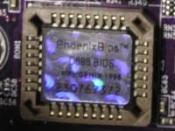Introduction
There have been many excellent papers, and books written on securing computer networks. They all largely address how to harden your network from the router on down to the switch, then eventually to the actual workstation itself. In many document cases of compromised networks, the end goal of the hacker was to suborn the actual workstation itself. The router, and sometimes a server of some kind, was not actually the end state of the hacker. It was normally to gain a toehold on the internal network via a client side exploit. Whether that be an operating system exploit or other vulnerability is a moot point. To be able to gain access to the, all too often, soft underbelly of the internal network is quite often the goal of a network hack. Once a foothold has been established, it is then that the keylogger, packet sniffer, rootkit, and other types of programs to further or hide exploitation are then ferried over to the now compromised computer.
Much, as I mentioned above, the actual workstation is often the goal of a hack. Funny thing is though, I have often heard some computer security people say "but they cut right through our router and other security....". Well that is the whole point of hardening from the operating system outwards. One should assume that eventually a determined attacker will make their way to the aforementioned workstation. With that in mind, one should begin to harden what is often seen as the weakest link in the network security chain; the workstation. This article will attempt to address this concept of "secure from within" with some recommendations. We must remember also that computer security, and complexity, really don't get along. The more complex the security the more likely it is that it will not be...


